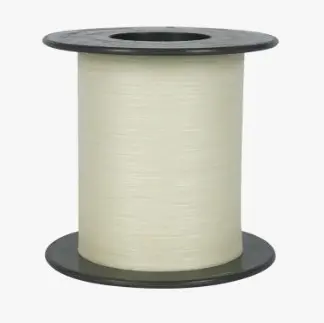In the modern textile industry, polyester printing fabric has become a vital component of numerous fabric categories due to its superior performance, rich color expression, and wide range of applications. With continuous innovations in printing technology and polyester fiber manufacturing processes, this fabric has not only gained a prominent position in the apparel industry but has also been widely used in home furnishings, outdoor products, and industrial fabrics.
I. Material Properties and Advantages of Polyester Printing Fabric
The core component of polyester printing fabric is polyester fiber, a synthetic fiber with exceptional strength and excellent elastic recovery. Its stable molecular structure offers exceptional abrasion and wrinkle resistance, and it maintains excellent morphological stability after heat setting. Compared to natural fibers, polyester fiber has a lower moisture absorption rate, which makes printed designs more vibrant and less susceptible to fading due to humidity. Polyester fiber's inherent light and chemical resistance ensures that polyester printed fabrics retain their outstanding appearance even after prolonged use or exposure to sunlight.
Polyester printed fabrics offer exceptional dyeing and printing properties. Because polyester molecules contain ester groups, they exhibit excellent affinity with disperse dyes. Under high temperature and high pressure, dye molecules can fully penetrate the fiber, achieving rich, stable, and uniform colors. This characteristic makes polyester-printed fabrics visually appealing, showcasing exceptional clarity and detail, whether in complex patterns, gradient colors, or high-definition digital prints.

II. Technological Innovation in Polyester Printing Technology
The development of polyester-printed fabrics is inseparable from advances in printing technology. From early traditional screen printing to today's digital inkjet printing, innovations in printing technology have greatly improved the production efficiency and artistic expression of polyester fabrics. Traditional printing methods require the production of screens, making them suitable for large-scale production, but they have certain limitations in pattern variation and color control. Modern digital printing technology, on the other hand, uses computer-controlled printheads to precisely spray dye onto the fabric surface, achieving plate-free production. This not only shortens production cycles but also enables personalized, small-batch customization.
In polyester printing, thermal sublimation transfer technology is one of the most representative processes. This technology utilizes sublimated disperse dyes, which transform directly from a solid to a vaporous state at high temperatures and penetrate the polyester fiber. Cooling then solidifies the dye, resulting in highly saturated patterns with durable color fastness. Because the dye forms a stable physical bond with the fiber, the printed fabric not only boasts vibrant colors but also excellent wash and abrasion resistance. It is widely used in sportswear, home textiles, and advertising displays.
In recent years, with the widespread adoption of environmental awareness and technological advancements, polyester printing has gradually shifted towards green and sustainable development. The emergence of low-water and low-energy printing equipment, along with the application of environmentally friendly disperse dyes and waterless printing technology, has enabled polyester printed fabrics to meet high-quality demands while also complying with the environmental standards of the modern textile industry.
III. Production Process and Quality Control of Polyester Printed Fabrics
The production process of polyester printed fabrics encompasses multiple steps, including fiber preparation, weaving, pretreatment, printing, shaping, and finishing. Process control at each step directly impacts the final product's feel, gloss, and color fastness. Fiber production primarily involves melt spinning to form polyester filaments. The yarn fineness and twist determine the fabric's structural density and surface smoothness.
During the pre-printing stage, the fabric undergoes desizing, degreasing, and heat-setting to remove impurities and improve the fabric's absorbency, thereby ensuring print clarity and stability. After printing, it typically undergoes steaming and water-washing to ensure dye penetration and bonding to the fibers. Final heat-setting and softening treatments not only enhance the fabric's feel and elasticity, but also enhance its dimensional stability and surface smoothness.
Quality control measures for polyester printed fabrics typically include color fastness, tear strength, shrinkage, and abrasion resistance. High-quality polyester printed fabrics should exhibit excellent color reproduction and surface finish, with strict color variation control, clear pattern boundaries, and a harmonious and uniform overall visual effect. These quality control steps ensure the stable performance of polyester printed fabrics in subsequent processing and end-use applications.
IV. Applications of Polyester Printed Fabrics
Polyester printed fabrics have a wide range of applications. Due to their high strength, lightness, and vibrant color, they are widely used in apparel, including sportswear, women's fashion, and casual wear. Meanwhile, in the home textile sector, polyester printed fabrics are widely used in curtains, bedding, sofa fabrics, and other products due to their easy-care, wear-resistant, and fade-resistant properties. In the outdoor and industrial sectors, polyester printed fabrics, due to their superior weather resistance and durability, are an ideal choice for products such as advertising banners, tents, and parasols.

The rise of polyester printed fabrics not only reflects technological advancements in textile materials but also represents a fusion of modern aesthetics and functional needs. With its unique visual impact, comfortable feel, and efficient production performance, it has become a key trend in the modern textile industry. In the future, with the further integration of smart printing and eco-fiber technologies, polyester printed fabrics will demonstrate even greater competitiveness in design innovation, environmentally friendly manufacturing, and international trade, continuing to lead the development of the global fabric industry.

 English
English русский
русский Español
Español











